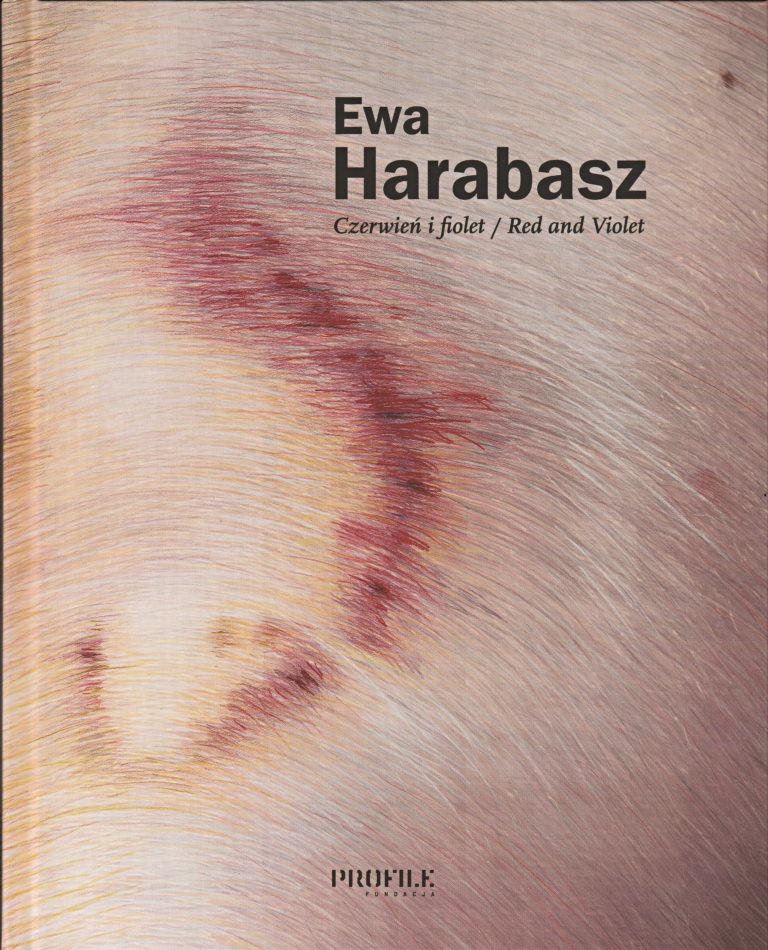Bilingual publication
2019
Pages: 68
Price: 25 20 pln
Order by e-mail: profile@fundacjaprofile.pl
Bruises usually change colour, turning from the initial red to maroon-purple, then to greenish, and finally to hues of yellow.
In a series of large-format drawings showing children’s buttocks, Ewa Harabasz traces the colour changes of bruises caused by abuse. The red and violet in the title stand for the colours of under-the-skin wounds inflicted on children. The artist avoids showing the victims, steering clear of sentimentalization. She forgoes the “reality effect” in order to very precisely represent the real effects of child abuse. Even though some of the renderings of contusions can seem abstract, all can be traced back to actual cases. Harabasz uses medical documentation, transferring to paper a record of the violence “imprinted” on the damaged tissues of children’s bodies. In the close-ups and enlargements of their hematomas, she traces abuses of power with methodical scrupulousness. Far from demonizing the subject or its representations, she proposes an almost laboratory-like study of violence.
These works are not about victimizing maltreated kids nor about stigmatizing the brute perpetrators of these cruelties. Rather, they raise questions about violence itself and its limits, ranging from the seemingly innocent spank to extreme and pathological ways of enforcing obedience. In other words, the artist draws attention, on the one hand, to how the issue has been ignored and, on the other, to its incidentalization and to the way the public turns a blind eye to what happens “behind closed door.”
Covering the walls with images of violence, the artist claims visibility for an issue that is reluctantly spoken about. Needless to say, the abused children don’t talk about it either, afraid to make things worse than they already are. Despite what Swedish activist Ellen Key suggested, the twentieth century wouldn’t become a “century of the child.” The corporeal punishment of children was fully banned in Poland only in 2010, and not without some vocal public opposition. In a number of Western countries the ban still doesn’t apply to domestic situations. Showing bruises on children’s bodies, Ewa Harabasz decries both violence and its social acceptance.

